European Memories
of the Gulag
ToPics
Work in deportation
Work was the centre of life in deportation. It was the whole of life in the camps. It was essential both for survival and for integration into the world where the deportees would have to live.
Work in the villages of special resettlers was different from that in the camps. It was usually rural work. In the camps, the prisoners were used mainly to build towns, railways, and factories and to open up and work coal and mineral mines. The distinction between special resettlers and prisoners was not a hard and fast one. For example, there were agricultural camps.
The deportees could survive by doing extra jobs. In the camps, forced labour was 100% of their work. Although they were all subject to extremely hard work, the depths of violence were to be found in the camps. The deportees discovered work that was chosen for them. They were often recruited on arrival, as in a slave market, by kolkhoz chiefs. The line between free or deported workers and prisoners was not always a clear one in areas where forced labour was the rule. Often, when their sentence was over, prisoners would settle locally. The special resettlers often worked alongside the locals in the same working teams and on the same conditions.
Forced labour was one of the essential means of industrial development in the USSR. Despite its poor economic return and extremely high human cost, it was standard in a number of regions of the USSR.
-
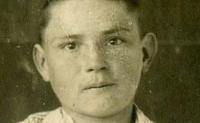 Adam Chwaliński sawing lumber
Adam Chwaliński sawing lumber
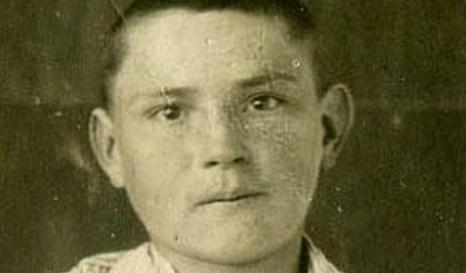
Source: Interview conducted in Poland by A. Niewiedzial, 23/04/2010.
Licence CC BY-NC-ND.
CloseAdam Chwaliński sawing lumber
In these two extracts, Adam Chwaliński describes how at the age of eleven and a half he worked sawing lumber in the forests of Siberia.
-
 Adam Chwaliński work in the taiga
Adam Chwaliński work in the taiga

Source: Interview conducted in Poland by A. Niewiedzial, 23/04/2010.
Licence CC BY-NC-ND.
CloseAdam Chwaliński work in the taiga
-
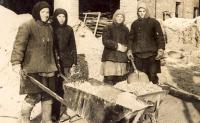 Work in the mine
Work in the mine
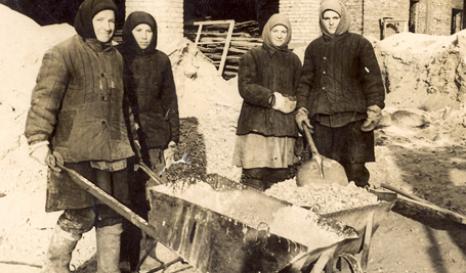
Source: Interview conducted in Russia by A. Blum & I. Tcherneva, 25/07/2015.
Licence CC BY-NC-ND.
CloseWork in the mine
Naum Kleiman on working in the mines.
-
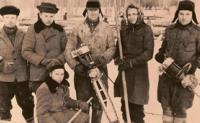 Jakobs Shats: Logging
Jakobs Shats: Logging
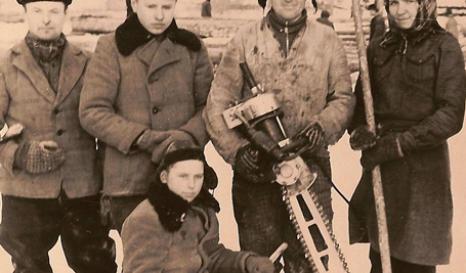
Source: Interview conducted in Latvia by M. Craveri, J. Denis & V. Nivelon, 12/06/2012.
Licence CC BY-NC-ND.
CloseJakobs Shats: Logging
"They ordered us out of the train and onto buses and took us north of Kansk in Taseevo district. There, they found us accommodation with local people, took our passports away and gave my father a paper to report with every week. That is how our life in Siberia began.
My parents were not allowed to do intellectual work, they had no authorisation. They could only do very hard physical tasks, such as work in forestry, kolkhoz or camps. Remember that all of us deportees were townsfolk, not used to hard labour in the fields.
Remember, too, that in that region it is very cold in winter, down to minus 50°C. We were not prepared for the cold; we’d been arrested and deported in June and hadn’t brought any warm clothes with us; there were major supply problems, the locals also suffered from the lack of food, and a lot of deportees who didn’t manage to sell or barter clothes died of hunger.
Q. Did you go to school?
I didn’t go to school because I had no warm clothes to go out in; in winter you had to have fur coats, hats, warm boots, and I didn’t have any; so for three years I couldn’t go to school and it wasn’t until 1944 that my parents could afford to buy clothes, so I then went to school for two years. We spent five years in Siberia.
Q. You didn’t go to school. What did you and your sister do?
All of us in the family worked, my parents started working because if you didn’t work you had no money and you couldn’t afford the essentials. My mother worked, my sister worked. In 1943 my elder sister was drafted again and sent further to the east, where a railway line was being built.
Q. What work did your family do in the Krasnoyarsk region?
We felled trees, my second sister was drafted to help with floating timber downstream. I was younger than 18, under age, but I went working too with my mother in the fields on the kolkhoz, I helped my mother during the harvest and took part in the fieldwork in that way.
-
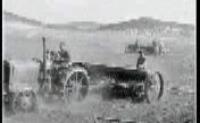 Juozas Miliauskas: Tractor mechanic!
Juozas Miliauskas: Tractor mechanic!
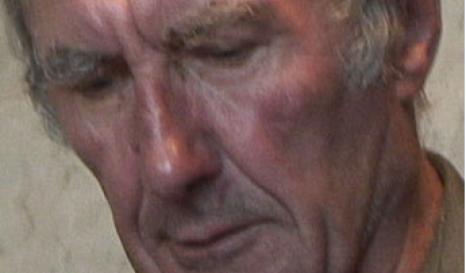
Source: Interview conducted in Russia by E. Koustova, L. Salakhova & A. Blum, 26/08/2009.
Licence CC BY-NC-ND.
CloseJuozas Miliauskas: Tractor mechanic!
Juozas Miliauskas:“I worked on tractors and my brother worked with our team accountant.
I was about 19. In those days, all the tractors belonged to the local agricultural equipment station. The people would cry, “A tractor mechanic!” And they would stop to watch us. It was certainly a lot better than digging with a spade!”
-
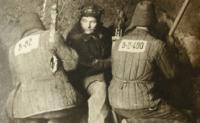 Work in the camps
Work in the camps
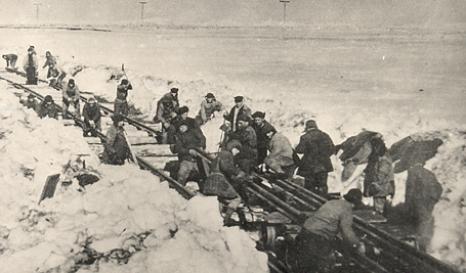
Prisoners building a railway line. Abez, Komis republic (Photograph, Anonymous, 1941). Source: Museum of Occupations and Freedom Fights.
Media subject to copyright.
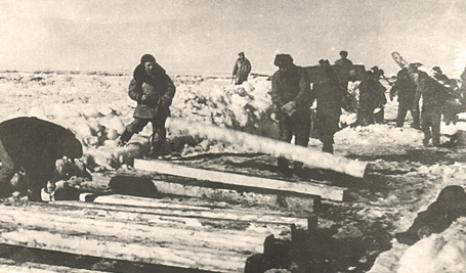
Prisoners building a railway line. Abez, Komis republic (Photograph, Anonymous, 1941). Source: Museum of Occupations and Freedom Fights.
Media subject to copyright.
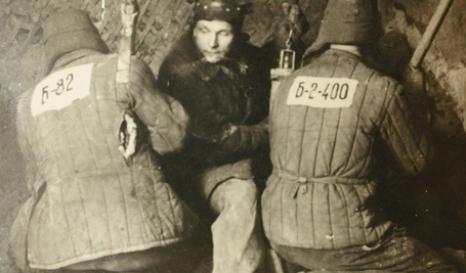
Prisoners in a mine, Inta, Komi republic (Photograph, Anonymous, Undated). Source: Museum of Occupations and Freedom Fights.
Media subject to copyright.
CloseWork in the camps
Work in the camps was different from the special resettlers’ work. The location was often harsh, the days endless, and the work itself – mining, building in extreme conditions – were at the limit of what a human being could take.
-
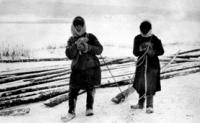 Work in special resettlement villages
Work in special resettlement villages
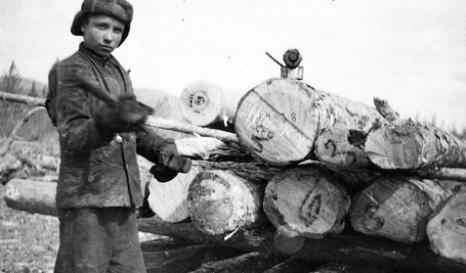
Child given logging work (Photograph, Anonymous, Undated). Source: Museum of Occupations and Freedom Fights.
Media subject to copyright.
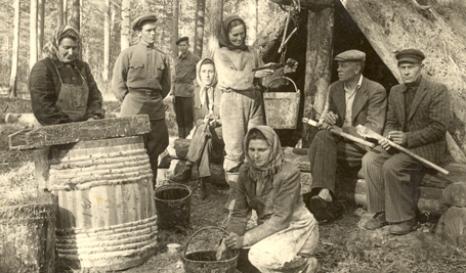
Conifer sap collection. Solovyov, Nizhneudinsk district, Irkutsk region (Photograph, Anonymous, 1950). Source: Museum of Occupations and Freedom Fights.
Media subject to copyright.
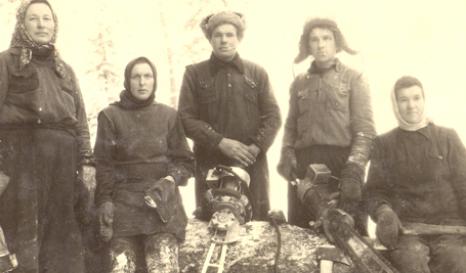
Lumberjack team. Korbik, Sovetsk district, Krasnoyarsk region (Photograph, Anonymous, 1950-1960). Source: Museum of Occupations and Freedom Fights.
Media subject to copyright.
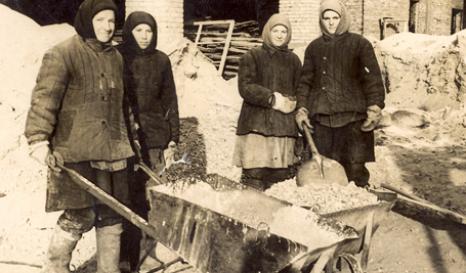
Lithuanian women on a building site. Grishev, Cheremkhovo district, Irkutsk region (Photograph, Anonymous, 1953). Source: Museum of Occupations and Freedom Fights.
Media subject to copyright.
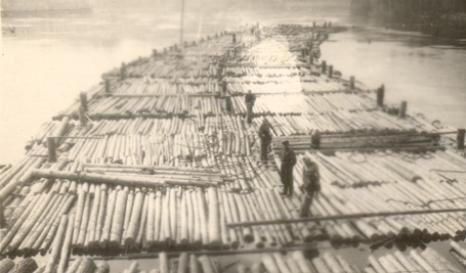
Floating timber down the Yenisei, Igarka, Krasnoyarsk region (Photograph, Anonymous, 1953). Source: Museum of Occupations and Freedom Fights.
Media subject to copyright.
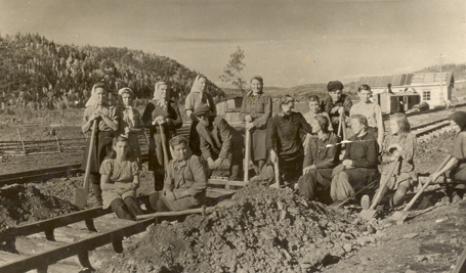
Building a railway. Pimiya, Mana district, Krasnoyarsk region (Photograph, Anonymous, 1951). Source: Museum of Occupations and Freedom Fights.
Media subject to copyright.
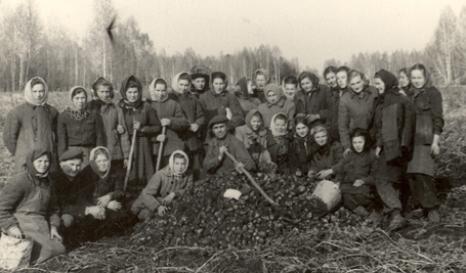
Farm work: potato picking. Suyetikha, Tayshet district, Irkutsk region (Photograph, Anonymous, 1954). Source: Museum of Occupations and Freedom Fights.
Media subject to copyright.
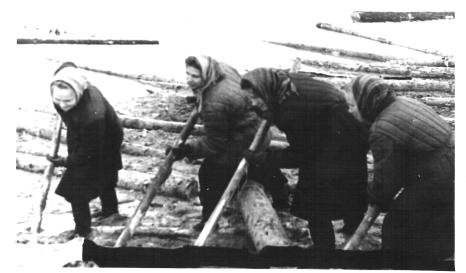
Timber rafting, Komi republic (Photograph, Anonymous, 1959). Source: Anatolij Smilingis's Personal archive.
Media subject to copyright.
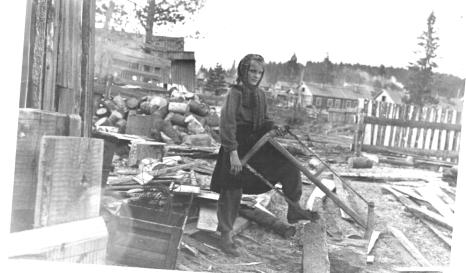
Woman logging, Komis republic (Photograph, Anonymous, 1950-1955). Source: Anatolij Smilingis's Personal archive.
Media subject to copyright.
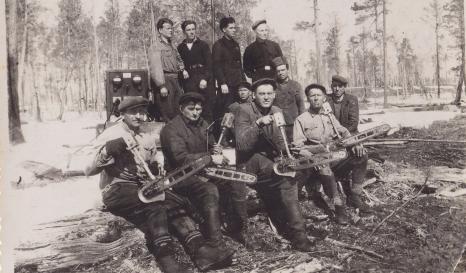
Kazimira Ričkutė’s father at work, Zulumaï, Irkutsk region (Photograph, Anonymous, 1954). Source: Kazimira Ričkutė's Personal archive.
Media subject to copyright.
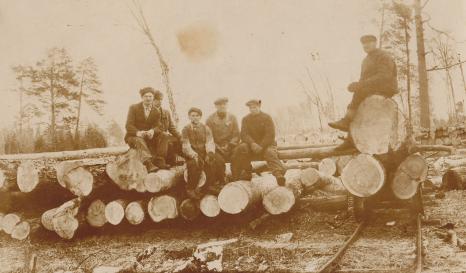
Kazimira Ričkutė’s father at work, Zulumaï, Irkutsk region (Photograph, Anonymous, 1954). Source: Kazimira Ričkutė's Personal archive.
Media subject to copyright.
CloseWork in special resettlement villages
Special resettlers’ work
-
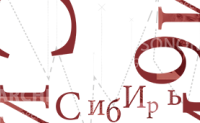 Promotion through work
Promotion through work
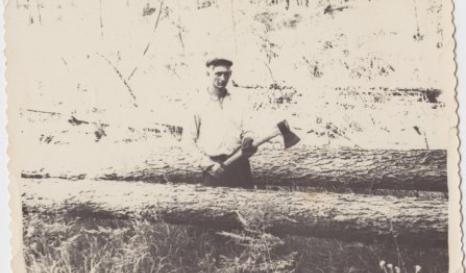
At work in the forest (Photograph, Anonymous, circa 1951). Source: Domas Laurinskas's Personal archive.
Media subject to copyright.
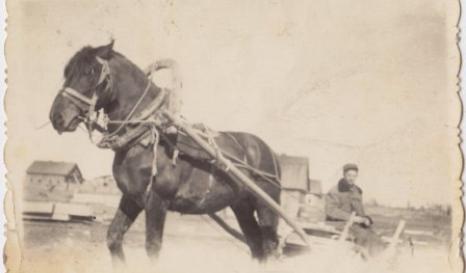
At work in the fields (Photograph, Anonymous, 1951-1965). Source: Domas Laurinskas's Personal archive.
Media subject to copyright.
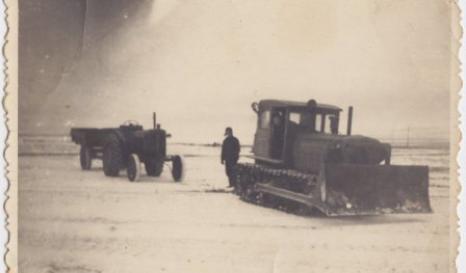
Driver (Photograph, Anonymous, 1951-1965). Source: Domas Laurinskas's Personal archive.
Media subject to copyright.
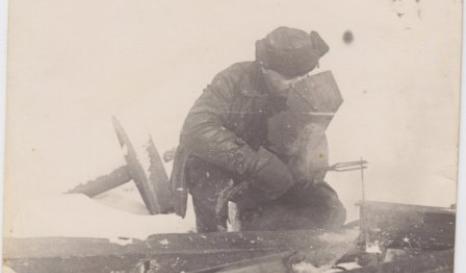
Welder (Photograph, Anonymous, 1951-1965). Source: Domas Laurinskas's Personal archive.
Media subject to copyright.
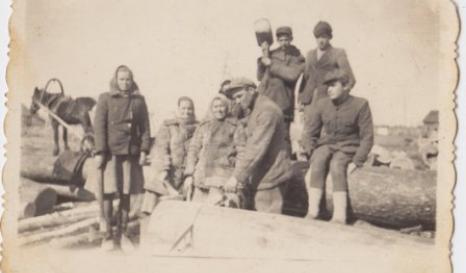
A brigade (Photograph, Anonymous, 1951-1965). Source: Domas Laurinskas's Personal archive.
Media subject to copyright.
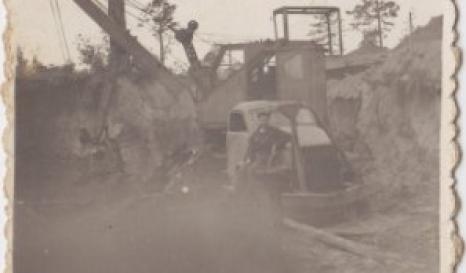
Driver (Photograph, Anonymous, 1951-1960). Source: Domas Laurinskas's Personal archive.
Media subject to copyright.
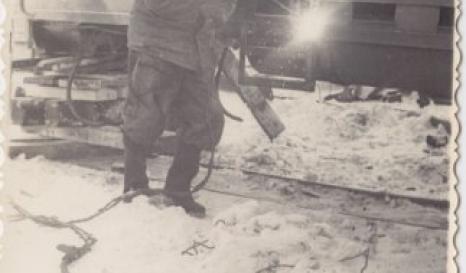
Repairing (Photograph, Anonymous, 1951-1960). Source: Domas Laurinskas's Personal archive.
Media subject to copyright.
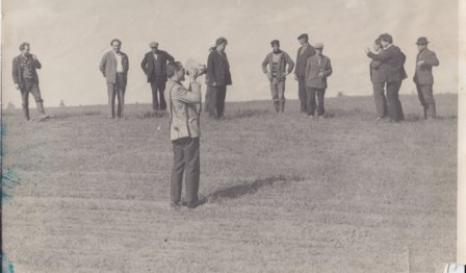
Another time (the 1970ies). A control Commission verifying cereal growth (Photograph, Anonymous, 1970-1980). Source: Domas Laurinskas's Personal archive.
Media subject to copyright.
ClosePromotion through work
Since Domas’s mother could not work, he began cutting timber at a young age, and then was hired for building work. He went from being an unqualified labourer to crane operator in 1951, and was employed outside the special settlement with the tacit agreement of the commandant, under the surveillance of his employer. He followed a career as mechanical plant operator.
-
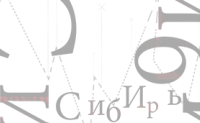 Alexandra Belomestnykh, as a child, follows a plough
Alexandra Belomestnykh, as a child, follows a plough
Source: Interview conducted in Russia by E. Koustova, L. Salakhova & A. Blum, 30/08/2009.
Licence CC BY-NC-ND.
CloseAlexandra Belomestnykh, as a child, follows a plough
-
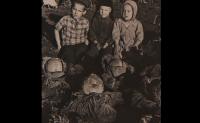 Juozas Miliautskas describes how he earned a living with farm work
Juozas Miliautskas describes how he earned a living with farm work
Source: Interview conducted in Russia by E. Koustova, L. Salakhova & A. Blum, 26/08/2009.
Licence CC BY-NC-ND.
CloseJuozas Miliautskas describes how he earned a living with farm work
-
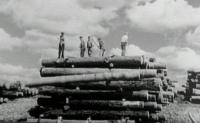 Floating timber
Floating timber
Eastern Siberian newsreel (Eastern Siberian newsreels studio, Circa 1950-1960). Source : Irkutsk Regional Film Archive.
Media subject to copyright
CloseFloating timber
Floating timber
The film is taken from an Irkutsk newsreel shot in 1949. Floating was the usual way of transporting timber from the huge logging operations, particularly north of Irkutsk.
-
 Sowing
Sowing
Eastern Siberian newsreel (Eastern Siberian newsreels studio, Circa 1950-1960). Source : Irkutsk Regional Film Archive.
Media subject to copyright
CloseSowing
Sowing
-
 Stalin kolkhoz
Stalin kolkhoz
Eastern Siberian newsreel (Eastern Siberian newsreels studio, Circa 1950-1960). Source : Irkutsk Regional Film Archive.
Media subject to copyright
CloseStalin kolkhoz
Becoming Soviet through work
This depiction of work on the kolkhoz includes all the features of what may be called “Sovietism”: the arrival of mechanisation along with the persistence of a large amount of unmechanised labour. The collective organisation of farming almost reproduces the factory assembly line. There are also signs of domination that were not then seen as such, such as that of men over women, where the men have all the attributes of power (suits, machines, in this case a motorbike, etc.).
This film was shown in a newsreel in Eastern Siberia, in 1950.
-
 Building a railway line
Building a railway line
Eastern Siberian newsreel (Eastern Siberian newsreels studio, Circa 1950-1960). Source : Irkutsk Regional Film Archive.
Media subject to copyright
CloseBuilding a railway line
Newsreel film from 1950. It is not known whether prisoners worked on this site, but it is quite possible for they were often used for this type of construction.



